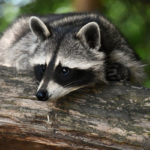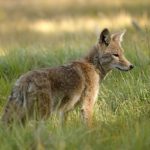Bats are the unsung heroes of our ecosystem, playing crucial roles that benefit us all.
Hey there, nature lovers! Ever wondered why bats are so important? These little night-flyers might not get as much love as pandas or dolphins, but they’re just as crucial to our planet’s health. Picture this: you’re enjoying a peaceful evening outdoors, free from the annoyance of buzzing mosquitoes. You can thank bats for that! These nocturnal superheroes are the unsung guardians of our ecosystems, and it’s high time we shed some light on their amazing contributions. Let’s dive into the world of bats and uncover why they truly matter, from pest control to pollination and beyond. Trust me, by the end of this article, you’ll see bats in a whole new light.
Key Takeaways
- Bats contribute significantly to pest control and pollination.
- They play a vital role in maintaining healthy ecosystems.
- Bats have a surprising economic impact on agriculture.
Bats as Natural Pest Controllers
Alright, let’s get into one of the coolest superpowers bats have – natural pest control. Imagine a world where farmers didn’t have to rely so heavily on chemical pesticides. Sounds dreamy, right? Well, bats are making that dream a reality. These nocturnal ninjas are voracious eaters, especially when it comes to insects.
Every night, a single bat can gobble up thousands of insects, including those pesky mosquitoes that love to ruin our summer evenings. But their diet isn’t just about making our BBQs more enjoyable. Bats play a crucial role in agriculture by keeping crop-damaging insects in check. Think about it: fewer bugs munching on crops means less need for chemical pesticides, which is a win for both farmers and the environment.
Consider this – in the U.S. alone, bats save the agriculture industry an estimated $3.7 billion a year in pest control services. That’s a lot of cash saved just by letting bats do what they do best. And it’s not just about the money. Reducing pesticide use means healthier ecosystems, cleaner water, and safer food for us all.
So, next time you see a bat zipping around at dusk, remember – it’s on a mission to keep our world a little bit greener and our lives a lot less buggy. These tiny pest controllers are a huge asset, silently working behind the scenes to maintain a balanced ecosystem and protect our crops. Who knew such small creatures could have such a big impact?

Pollinators and Seed Dispersers
Now, let’s talk about another superhero skill that bats possess – their role as pollinators and seed dispersers. You might be thinking, “Wait, bats do more than just eat bugs?” Absolutely! These night-time dynamos are also key players in keeping our ecosystems vibrant and diverse.
First off, let’s chat about pollination. You might already know that bees and butterflies are great pollinators, but did you know that bats are too? Many bat species, especially in tropical and desert regions, are essential pollinators for a variety of plants. This includes some plants that produce fruits we love, like bananas, mangoes, and even the agave plant – yes, the one that gives us tequila. Imagine a world without these delicious fruits and, dare I say, tequila! It’s the bats who help keep these plants thriving by transferring pollen as they feed on nectar.
But wait, there’s more. Bats also play a crucial role in seed dispersal. Many plants rely on bats to spread their seeds far and wide, promoting forest regeneration and biodiversity. When bats eat fruits, they fly off and later excrete the seeds in different locations, often far from the parent plant. This helps in the growth of new plants and maintains healthy, diverse ecosystems. Forests, especially rainforests, owe a lot to these flying gardeners who help plants colonize new areas and maintain genetic diversity.
Imagine bats as the unsung gardeners of the night, working tirelessly to ensure our forests and gardens flourish. Without them, many plant species would struggle to survive, leading to less diverse and resilient ecosystems.
Economic Benefits of Bats
Alright, folks, let’s dive into the dollars and cents of why bats matter – the economic benefits. You might not think of these little creatures as financial powerhouses, but their contributions to the economy are nothing short of impressive.
First up, pest control. As we mentioned earlier, bats are voracious insect eaters. By keeping pest populations in check, they provide a natural service that saves the agriculture industry billions of dollars each year. Fewer pests mean healthier crops and less reliance on expensive chemical pesticides. In the U.S. alone, bats save farmers an estimated $3.7 billion annually. That’s money that can be reinvested into sustainable farming practices, research, and even lower prices for consumers. It’s a win-win situation all around.
Now, let’s talk about healthcare. Reducing the use of chemical pesticides, thanks to bats’ natural pest control, means fewer chemicals in our environment. This translates to cleaner water, healthier soil, and, ultimately, better health for humans and wildlife alike. Fewer chemicals in our food and water supply can reduce the risk of pesticide-related health issues, which can save on healthcare costs and improve overall well-being.
Bats also boost local economies through tourism. Yep, you heard that right – bat tourism is a thing! Many regions around the world have turned their bat populations into tourist attractions. For example, the Congress Avenue Bridge in Austin, Texas, is home to the largest urban bat colony in North America. Every evening, thousands of tourists gather to watch the bats emerge at dusk, bringing significant revenue to the local economy through tourism-related spending on hotels, restaurants, and activities. This kind of eco-tourism not only educates people about the importance of bats but also supports local businesses.
And let’s not forget about the indirect economic benefits. Bats play a crucial role in pollination and seed dispersal, as we discussed earlier. Healthy ecosystems with diverse plant and animal life contribute to the overall stability of our environment, which in turn supports agriculture, forestry, and fisheries. These industries rely on robust ecosystems to thrive, and bats are an integral part of that equation.
Fascinating Bat Facts
Ready to have your mind blown? Bats are not just essential for our ecosystems and economy; they’re also downright fascinating. Here are some cool bat facts that will make you appreciate these nocturnal marvels even more.
Incredible Diversity
There are over 1,400 species of bats, making them the second most diverse group of mammals after rodents. They range in size from the tiny bumblebee bat, which weighs less than a penny, to the giant flying fox, with a wingspan of up to six feet. This incredible diversity means that bats have adapted to a wide range of habitats and diets, showcasing nature’s creativity at its finest.
Masters of Flight
Bats are the only mammals capable of sustained flight. Unlike birds, bats have flexible wings with a thin membrane of skin stretched over elongated fingers. This unique wing structure allows for remarkable agility and maneuverability in the air, enabling them to catch insects on the fly and navigate through the darkest of nights with ease.
Long Lifespan
Despite their small size, bats can live surprisingly long lives. Some species of bats can live up to 30 years or more, which is quite impressive when you consider that most small mammals have much shorter lifespans. This longevity allows bats to play a consistent role in their ecosystems over many years.
Echolocation Experts
Many bats use echolocation to navigate and hunt in the dark. By emitting high-frequency sounds and listening for the echoes that bounce back from objects, bats can create a mental map of their surroundings. This remarkable ability allows them to detect even the smallest insects in complete darkness, making them highly efficient hunters.
Social Creatures
Bats are incredibly social animals. They often live in large colonies, sometimes numbering in the millions. These colonies can be found in caves, trees, buildings, and even bridges. Living in groups provides bats with safety in numbers and enhances their ability to locate food and mates.
Important Pollinators
As we’ve discussed, many bats are crucial pollinators. Without them, we’d have a hard time enjoying some of our favorite fruits and plants. In fact, some plants have evolved to bloom at night specifically to attract bat pollinators. These plants often have strong scents and large, pale flowers, making them easy for bats to find in the dark.
Disease Fighters
Bats play a role in controlling the spread of diseases. By consuming large quantities of insects, they help reduce the population of disease-carrying pests such as mosquitoes. This natural pest control helps lower the risk of diseases like malaria and West Nile virus, protecting both humans and animals.
The Plight of Bats
As much as we’ve celebrated the incredible awesomeness of bats, it’s time to talk about the challenges they face. Despite their many benefits and fascinating traits, bats are in trouble. Let’s delve into the major threats that are putting these vital creatures at risk.
Habitat Loss
One of the biggest threats to bats is habitat destruction. Deforestation, urbanization, and agricultural expansion are wiping out the natural habitats that bats depend on. Trees, caves, and other roosting sites are being destroyed, leaving bats with fewer places to live and breed. This loss of habitat not only reduces bat populations but also disrupts the ecosystems they help maintain.
Disease
Bats are susceptible to diseases, just like any other animal. One of the most devastating diseases affecting bats is White-Nose Syndrome (WNS), a fungal infection that has killed millions of bats in North America since it was first discovered in 2006. WNS causes bats to wake from hibernation frequently, depleting their fat reserves and leading to starvation. The rapid spread of this disease has had catastrophic effects on bat populations.
Climate Change
Climate change poses a significant threat to bats. Changes in temperature and weather patterns can affect the availability of food and suitable roosting sites. Warmer winters can disrupt hibernation cycles, while extreme weather events can destroy habitats and food sources. As climate change continues to alter our environment, bats are struggling to adapt to these rapid changes.
Human Disturbance
Human activities, such as cave tourism and urban development, can disturb bat colonies. Bats are sensitive to light and noise, and frequent disturbances can cause them to abandon their roosts, leading to increased stress and reduced reproductive success. Additionally, the use of pesticides and other chemicals can poison bats and reduce their food supply.
Misconceptions and Fear
Bats often suffer from a bad reputation, fueled by myths and misconceptions. Many people fear bats, associating them with diseases and vampires. This fear can lead to persecution and the destruction of bat roosts. In reality, bats are shy, gentle creatures that pose little threat to humans. Educating the public about the true nature of bats is crucial for their conservation.
Wind Turbines
While wind energy is a clean and sustainable power source, it can pose a threat to bats. Many bats are killed each year by collisions with wind turbines. Efforts are being made to develop bat-friendly turbine designs and to implement measures that reduce the risk of bat fatalities, but it remains a significant concern.
The plight of bats is a pressing issue that requires our attention and action. Conservation efforts are crucial to protect these invaluable creatures. By preserving their habitats, combating diseases like WNS, mitigating the effects of climate change, and reducing human disturbances, we can help ensure that bats continue to thrive.














